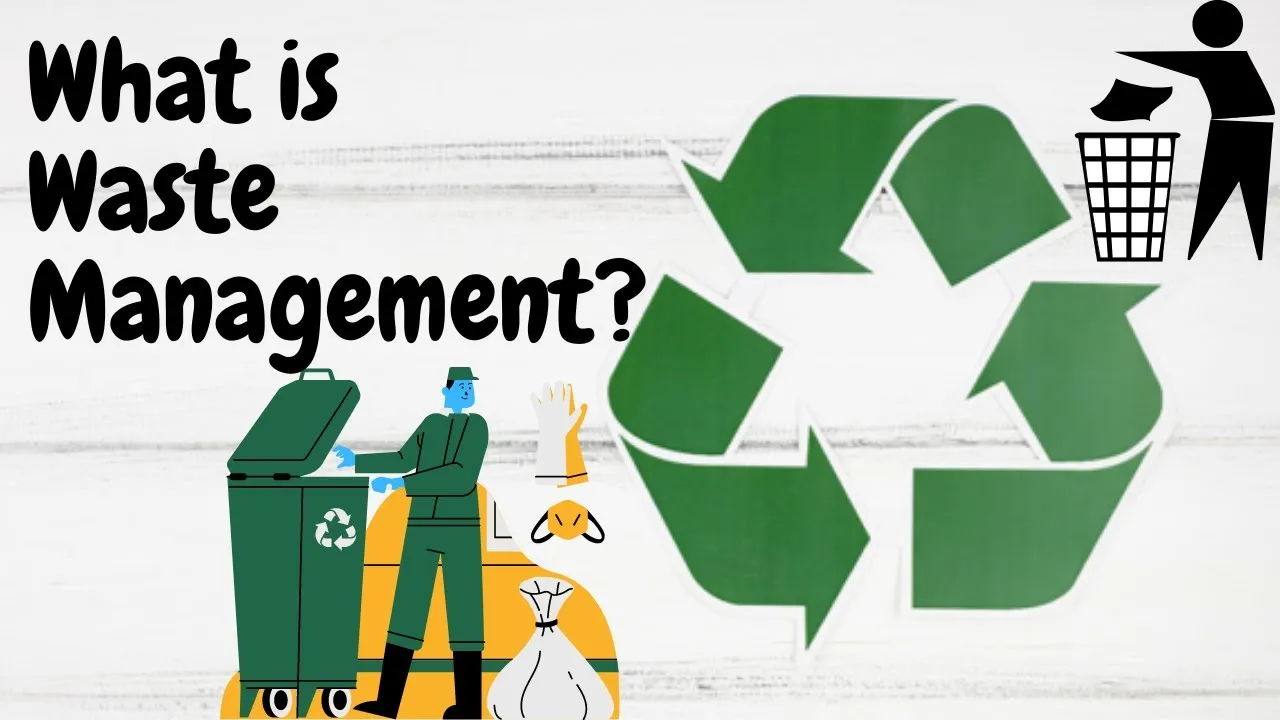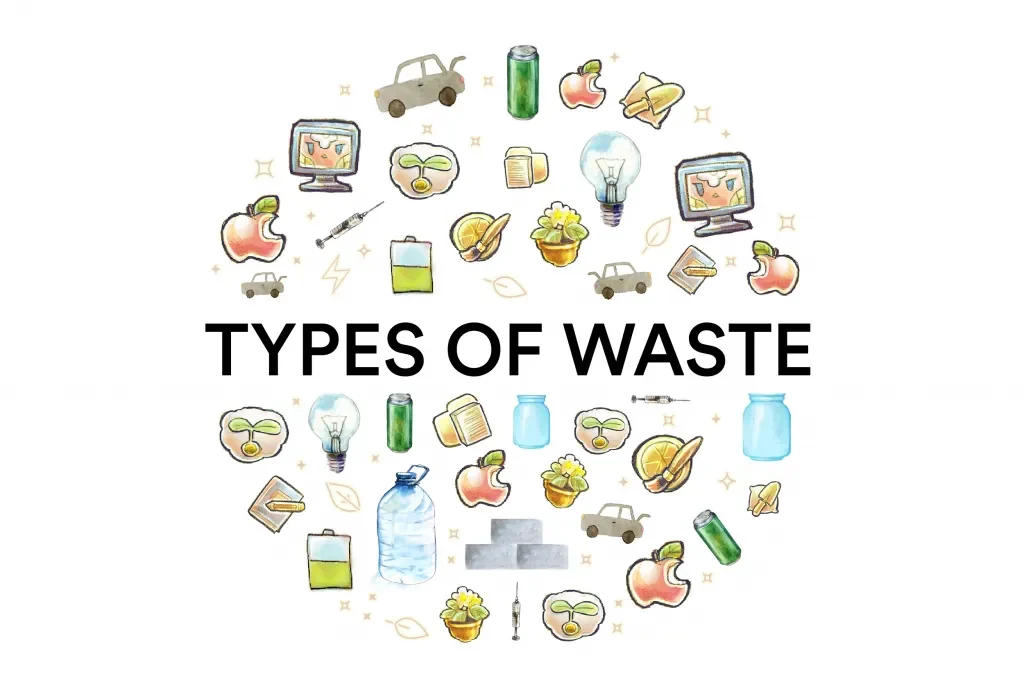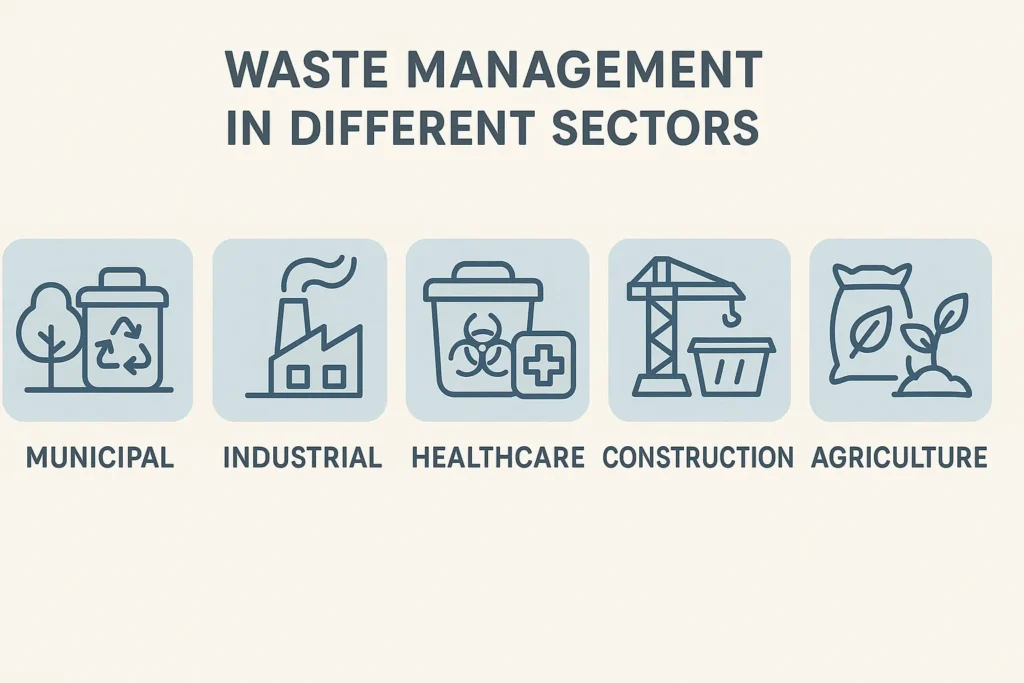
Executive Summary
In an era of rapid urbanization, industrial growth, and population expansion, waste management has become a critical component of environmental sustainability and public health. Waste management is the systematic process of collecting, transporting, processing, recycling, and disposing of waste in a manner that minimizes its impact on people and the environment.
This guide explores what waste management is, its types, principles, processes, benefits, challenges, technologies, and real-world applications, providing a comprehensive understanding of how effective waste management supports a cleaner, healthier, and more sustainable world.
Table of Content
Understanding Waste Management
Waste management refers to the set of activities and actions required to manage waste from its inception to final disposal. This includes collection, transport, treatment, and disposal, as well as monitoring and regulation of waste management practices.
The primary goals are to:
- Protect human health
- Preserve natural resources
- Minimize environmental pollution
- Promote sustainable use of materials
Waste management is not only about disposal—it is also about reducing waste generation, reusing materials, and recycling whenever possible.
Why Waste Management Matters
- Public Health Protection: Prevents spread of diseases caused by improperly handled waste.
- Environmental Preservation: Reduces pollution of land, water, and air.
- Resource Conservation: Promotes recycling and reuse of materials.
- Climate Change Mitigation: Proper waste disposal reduces greenhouse gas emissions.
- Economic Benefits: Supports industries such as recycling, composting, and energy recovery.
- Regulatory Compliance: Ensures adherence to environmental laws and standards.
Without effective waste management, communities face health risks, environmental degradation, and economic inefficiencies.
Types of Waste
Understanding the types of waste is critical for effective management:

1. Municipal Solid Waste (MSW)
Commonly known as household waste, including food scraps, paper, plastics, glass, and metals.
2. Industrial Waste
Generated by manufacturing and industrial processes; may include chemicals, metals, and hazardous materials.
3. Hazardous Waste
Materials that are toxic, flammable, corrosive, or reactive, requiring special handling.
4. Biomedical Waste
Produced by hospitals, clinics, and laboratories; includes sharps, medical instruments, and infectious materials.
5. E-Waste
Discarded electronic products like computers, mobile phones, and batteries.
6. Agricultural Waste
Crop residues, animal manure, and agrochemicals from farming activities.
7. Construction and Demolition Waste
Debris from building, renovation, or demolition activities.
Principles of Waste Management
Effective waste management is based on the following principles:
- Reduce: Minimize waste generation at the source.
- Reuse: Extend the life of materials to reduce disposal.
- Recycle: Convert waste into new materials or products.
- Recover: Extract energy or valuable materials from waste.
- Dispose Safely: Ensure environmentally safe disposal of residual waste.
- Compliance: Follow local, national, and international waste management regulations.
These principles are commonly referred to as the “waste hierarchy”, emphasizing prevention before disposal.
The Waste Management Process
The process of waste management typically includes the following steps:
1. Waste Generation
Identifying sources and types of waste, whether residential, commercial, or industrial.
2. Waste Collection
Gathering waste from households, businesses, or industries using bins, trucks, and other collection systems.
3. Waste Segregation
Separating waste into categories such as biodegradable, recyclable, hazardous, and non-recyclable.
4. Waste Transportation
Transporting waste safely to processing or disposal facilities while minimizing environmental impact.
5. Waste Treatment
Processing waste to reduce volume, eliminate hazards, or convert it into useful materials or energy. Methods include:
- Composting: Organic waste converted to fertilizer
- Incineration: Burning waste to reduce volume and generate energy
- Recycling: Processing materials for reuse
- Chemical or Biological Treatment: Neutralizing hazardous materials
6. Waste Disposal
Safely discarding waste that cannot be reused, recycled, or recovered. Landfills and controlled dumping sites are commonly used.
7. Monitoring and Compliance
Tracking waste management practices to ensure safety, efficiency, and regulatory compliance.
Related Articles to Explore
Explore how effective management practices contribute to sustainability and operational excellence:
- What Is Operations Management – Learn how streamlined operations reduce waste and improve resource efficiency.
- What Is Asset Management – Discover how maintaining and optimizing assets supports sustainable practices.
- What Is Supply Chain Management – Understand how logistics and procurement decisions impact waste generation and recycling efforts.
- What Is Business Management – See how strategic planning and decision-making enhance environmental responsibility.
- What Is Risk Management – Learn how identifying environmental risks contributes to safer and more sustainable operations.
Waste Management Technologies
Modern waste management increasingly relies on technology and innovation to improve efficiency:

- Automated Waste Collection: Smart bins and sensors for efficient pickup
- Waste-to-Energy Plants: Converting non-recyclable waste into energy
- Material Recovery Facilities: Sorting and processing recyclables
- Biodegradable Packaging: Reducing plastic waste through sustainable alternatives
- E-Waste Recycling Technologies: Extracting metals and components from electronics
- Composting Systems: Converting organic waste to fertilizers or biogas
Technology enables sustainable waste management while reducing environmental impact.
Role of a Waste Manager
A waste manager is responsible for planning, implementing, and overseeing waste management systems. Key responsibilities include:
- Developing and enforcing waste management policies
- Planning collection, transportation, and disposal operations
- Promoting recycling, reuse, and recovery initiatives
- Ensuring regulatory compliance and reporting
- Educating communities or employees on proper waste handling
Effective waste managers combine technical knowledge, organizational skills, and environmental awareness to drive sustainable practices.
Benefits of Waste Management
- Environmental Protection: Reduces pollution and conserves natural resources.
- Public Health Safety: Prevents disease outbreaks caused by improper waste disposal.
- Economic Opportunities: Recycling and recovery generate employment and income.
- Energy Recovery: Waste-to-energy solutions provide renewable energy.
- Sustainability: Supports long-term environmental and societal well-being.
- Compliance and Reputation: Enhances trust and adherence to environmental laws.
Waste management is essential for creating sustainable, livable communities.
Challenges in Waste Management
Despite its importance, waste management faces significant challenges:
- Rapid urbanization and increasing waste generation
- Limited infrastructure for collection, recycling, or disposal
- Public awareness and behavioral issues
- Handling hazardous and toxic waste safely
- Financial constraints for advanced treatment technologies
- Compliance with complex environmental regulations
Overcoming these challenges requires policy interventions, technological adoption, and community engagement.
Waste Management in Different Sectors

1. Municipal
Cities and towns manage residential and commercial waste to maintain public health and urban cleanliness.
2. Industrial
Manufacturers implement waste minimization, recycling, and safe disposal strategies to comply with environmental regulations.
3. Healthcare
Hospitals and clinics manage biomedical and hazardous waste to prevent contamination and disease.
4. Construction
Construction companies manage debris and hazardous materials through proper disposal and recycling programs.
5. Agriculture
Farmers manage crop residues, animal waste, and chemicals to prevent soil and water contamination.
Real-World Examples of Waste Management
- Sweden’s Waste-to-Energy Plants: Almost all non-recyclable waste is converted to energy, reducing landfill usage.
- San Francisco’s Zero-Waste Program: Focused on recycling and composting, achieving high waste diversion rates.
- E-Waste Recycling in India: Companies recover valuable metals and components from discarded electronics.
- Composting Initiatives in Japan: Food waste converted to fertilizers for sustainable agriculture.
These examples demonstrate how effective waste management contributes to environmental and economic sustainability.
The Future of Waste Management
The field is evolving rapidly with innovation and sustainability priorities:
- Smart Waste Systems: IoT-enabled sensors and AI for efficient collection and sorting.
- Circular Economy: Reducing waste by reusing materials and promoting sustainable production.
- Advanced Recycling Technologies: Chemical recycling and upcycling of plastics and electronics.
- Renewable Energy from Waste: Expanding waste-to-energy solutions.
- Public Awareness and Education: Promoting responsible consumption and disposal habits.
The future focuses on sustainable, technology-driven, and community-oriented waste management.
Conclusion
Waste management is a critical aspect of modern life, impacting public health, environmental sustainability, and economic development. By systematically collecting, processing, recycling, and disposing of waste, organizations and communities can minimize harm, conserve resources, and create a cleaner, healthier planet.
Implementing effective waste management requires strategic planning, technological adoption, regulatory compliance, and public engagement. As global challenges such as urbanization and climate change intensify, robust waste management practices are no longer optional—they are essential for sustainable growth and environmental stewardship.


